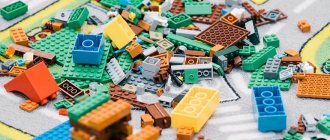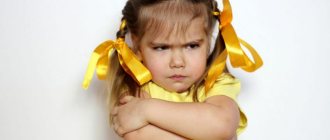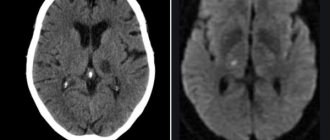Dyslalia is a disorder of sound pronunciation in children with normal hearing and intact innervation of the articulatory apparatus. With dyslalia, there may be a violation and difficulty in pronouncing any phonemes of the child’s native language.
Dyslalia is characterized by replacement, confusion, distortion or absence of sounds in the child’s oral speech. Diagnosis of dyslalia involves a speech therapy examination of the structure and mobility of the speech apparatus, as well as diagnosis of the state of current sound pronunciation and phonemic hearing. In some cases, consultation with highly specialized specialists (dentist, neurologist, otolaryngologist) is necessary.
The causes of this speech disorder can be organic, hereditary, congenital or acquired factors.
Types of dyslalia
Dyslalia, as a form of speech pathology in children, has various types and forms. The classification depends on the reasons for which the sound pronunciation disorder occurs. Experts distinguish two forms of dyslalia: mechanical and functional.
Mechanical (organic) dyslalia is a form of speech pathology caused by the presence of defects in the structure of the articulatory apparatus.
The causes of functional dyslalia, in contrast to mechanical dyslalia, are associated either with social factors or with reversible neurodynamic disorders in the cerebral cortex.
Functional dyslalia has the following varieties:
- motor dyslalia: this pathology is characterized by imprecise and undifferentiated movements of the tongue and lips, which causes phonetic defects (distortion of sounds);
- sensory dyslalia: with this disorder, auditory differentiation of acoustically similar sounds (hard/soft, dull/voiced, etc.) is difficult, causing the child to mix and replace sounds in oral speech.
In addition, there are cases when experts identify the presence of sensory and motor speech insufficiency; this type of disorder is called “sensorimotor dyslalia.”
The lack of formation of certain signs of sounds and the nature of the speech defect allow us to distinguish the following types of dyslalia:
1. Phonemic dyslalia - the cause of this type of dyslalia is the immaturity of the operations of selecting sounds according to their articulatory characteristics. With this form of dyslalia, the articulatory base may or may not be fully formed. In the first case, the child simply selects the sounds incorrectly; the second option assumes that in the absence of the desired sound, the child replaces it with a simpler phoneme.
2. Phonetic dyslalia - the occurrence of this form of dyslalia is associated with the formation of incorrect articulatory positions. Such a speech disorder manifests itself in the fact that the child pronounces a sound that does not exist in the phonetic system of the language.
Taking into account the number of disrupted sounds, the following types of violations can be distinguished:
- simple dyslalia (monomorphic dyslalia) - characterized by incorrect pronunciation of one sound or several sounds from one group;
- complex dyslalia (or “erased” dyslalia, or polymorphic dyslalia) - characterized by incorrect pronunciation of several sounds from different groups.
Experts also distinguish physiological dyslalia (or age-related), which is characterized by disturbances in sound pronunciation up to 5 years of age, caused by insufficient development of the organs of articulation. This speech disorder goes away on its own after 5 years.
Symptoms of deviation
Dyslalia is characterized by a wide variety of symptoms represented by omissions (complete loss of speech), substitutions (substitution of a different sound each time it occurs), distortion (abnormal pronunciation) and confusion of sounds (pronunciation is sometimes correct, sometimes incorrect). Various symptoms appear depending on the form of the disease:
- with functional, the pronunciation of one or more sounds is impaired
- with mechanical - a group of sounds similar in articulation;
- with physiological, age-related tongue-tiedness is observed, the cause of which is the immaturity of phonemic hearing and the inability to correctly control the movements of the speech organs, which naturally goes away by the age of 5.
Causes of dyslalia
The occurrence of speech impairment in a child can be due to a number of reasons. Somatic causes include physical and neurological weakness (due to long-term chronic diseases).
Mechanical dyslalia, as a rule, occurs due to organic or congenital defects of the articulatory apparatus (tongue, lips, teeth, jaws).
Social reasons (with functional dyslalia) for the occurrence of speech disorders are as follows:
- bilingualism (bilingualism in the family - in this case, the child inserts elements of one language into another);
- the child imitates the incorrect speech of adults (uses dialects, is in a hurry);
- adults, when communicating with a child, imitate baby babble (“lisp”);
- pedagogical neglect (parents do not correct deficiencies in their children’s speech and do not demonstrate examples of correct sound pronunciation).
In addition, factors such as:
- choice of incorrect articulation;
- underdevelopment of phonemic hearing (while physical hearing can be preserved).
Impaired sound perception
Fluent speech is essential for success in school. It is for this reason that speech needs to be given special attention. The process of formation of the speech apparatus is influenced by several factors, including hearing. Any auditory pathology negatively affects pronunciation. The child hears a word, sound, or letter incorrectly, and accordingly pronounces it incorrectly. Phonetic or sound perception is the ability to correctly hear and distinguish the sounds “P-B”, “S-Sh”, “L-R”.
Often, children with impaired sound perception distort even phonemes that individually they can pronounce correctly. They are unable to analyze their speech well, may make mistakes when writing, and have difficulty reading aloud. Such violations require work and correction by speech therapists and teachers. Many of these disorders can be eliminated in preschool age, preventing them from developing into a persistent form, which will be difficult to correct.
It is important to know that at school age speech develops very intensively, it is flexible and pliable. A child with impaired hearing may not perceive close and similar sounds. There are no words in his vocabulary that contain combinations of letters that are difficult for him to distinguish. This ultimately leads to the fact that he begins to lag behind his peers.
Dyslalia examination
Diagnosis of speech with dyslalia in children begins with collecting the following data:
- features of the course of pregnancy and childbirth in the mother;
- a list of diseases suffered by the child;
- whether there is early psychomotor and speech development;
- the condition of the child’s hearing, vision and musculoskeletal system.
After collecting the necessary information, the speech therapist proceeds to study the structure and mobility of the organs of the articulatory apparatus (visual inspection and assessment of the performance of a series of imitation exercises).
Diagnostics of oral speech at the First Children's Medical Center includes examination of the state of sound pronunciation and identification of incorrectly pronounced sounds. A speech therapy examination for this speech pathology makes it possible to identify the nature of the disorder in various positions, words, phrases, and texts.
Speech development disorders in children and their correction
Speech formation is one of the main characteristics of a child’s overall development. Normally developing children have good abilities to master their native language. Speech becomes an important means of communication between the child and the world around him, the most perfect form of communication inherent only to humans. But since speech is a special higher mental function provided by the brain, any deviations in its development should be noticed in time. For normal speech formation, it is necessary that the cerebral cortex reaches a certain maturity, the articulatory apparatus is formed, and hearing is preserved. Another indispensable condition is a complete speech environment from the first days of a child’s life. The main indicators of speech development from 1 year to 6 years are given in Table 1.
Speech is one of the complex higher mental functions and has two important components:
- perception of speech sounds, for which Wernicke's center is responsible (located in the auditory cortex of the temporal lobe);
- reproduction of sounds, words, phrases is a speech motor function, which is provided by Broca's center (located in the lower parts of the frontal lobe, in close proximity to the projection in the cortex of the muscles involved in speech).
Both speech centers in right-handers are located in the left hemisphere of the brain (Fig. 1), and in left-handers, on the contrary, in the right. In accordance with this, a distinction is made between impressive speech (the process of listening to speech, understanding the meaning and content of a speech utterance) and expressive speech (the process of speaking using language).
| Figure 1. Speech centers of the brain |
During speech development, children must master several subsystems of their native language. The first of these is phonetics, the system of speech sounds. Any language is based on a certain signal or phonemic feature, changing which changes the meaning of the word. This signal, semantically distinctive feature forms the basis of the sound units of language - phonemes (from the Greek phonema - “speech sound”). There are 42 phonemes in the Russian language, including 6 vowels and 36 consonants. The main semantic distinctive features include sonority and dullness (was-dust, house-volume, guest-bone), hardness and softness (dust-dust), stressed and unstressed (za'mok-zamo'k).
In addition, language is an ordered system in which all parts of speech are interconnected according to certain rules. The set of these rules makes up grammar, thanks to which words are formed into complete semantic units. Syntax sets the rules for combining words in a sentence, semantics explains the meaning of individual words and phrases, and pragmatics sets the social rules that dictate what, how, when, and to whom to speak. In the process of speech development, children master these laws of their native language (J. Butterworth, M. Harris, 2000).
The reasons for the delay in speech development may be pathology during pregnancy and childbirth, dysfunction of the articulatory apparatus, damage to the organ of hearing, a general lag in the mental development of the child, the influence of heredity and unfavorable social factors (insufficient communication and education). Difficulties in mastering speech are also typical for children with signs of retarded physical development, those who suffered serious illnesses at an early age, those who are weakened, or those who receive malnutrition.
Hearing impairment is a common cause of isolated speech delay. It is known that even moderately pronounced and gradually developing hearing loss can lead to delays in speech development. Signs of hearing loss in a baby include a lack of response to sound signals and an inability to imitate sounds, while in an older child there is excessive use of gestures and close observation of the movements of the lips of speaking people. However, the assessment of hearing based on the study of behavioral reactions is insufficient and is subjective. Therefore, if partial or complete hearing loss is suspected, a child with isolated speech delay should undergo an audiological examination. The method of recording auditory evoked potentials also provides reliable results. The sooner hearing defects are detected, the sooner it will be possible to begin appropriate corrective work with the baby or equip him with a hearing aid.
Less commonly, a delay in speech development is associated with a child having autism or a general mental retardation. In such cases, an in-depth psychoneurological examination is indicated.
Classifications of speech development disorders in children
Diagnosis of speech development disorders requires the participation of not only doctors, but also speech therapists, psychologists, and special education specialists in helping the child. To date, no unified classification of speech disorders in children has been developed. Depending on the leading disorders underlying speech disorders in children, L. O. Badalyan (1986, 2000) proposed the classification below.
I. Speech disorders associated with organic damage to the central nervous system (CNS). Depending on the level of damage to the speech system, they are divided into the following forms.
- Aphasia is the collapse of all components of speech as a result of damage to the cortical speech areas.
- Alalia is a systemic underdevelopment of speech as a result of damage to the cortical speech zones in the pre-speech period.
- Dysarthria is a violation of the sound pronunciation side of speech as a result of a violation of the innervation of the speech muscles. Depending on the location of the lesion, several variants of dysarthria are distinguished: pseudobulbar, bulbar, subcortical, cerebellar.
II. Speech disorders associated with functional changes in the central nervous system (stuttering, mutism and surdomutism).
III. Speech disorders associated with defects in the structure of the articulatory apparatus (mechanical dyslalia, rhinolalia).
IV. Delays in speech development of various origins (prematurity, severe diseases of internal organs, pedagogical neglect, etc.).
In domestic speech therapy, two classifications of speech disorders are used: clinical-pedagogical and psychological-pedagogical (L. S. Volkova, S. N. Shakhovskaya et al., 1999). These classifications, although they consider the same phenomena from different points of view, do not contradict, but complement one another and are focused on solving different problems of a single, but multifaceted process of correction of speech development disorders. It should be noted that both classifications relate to primary speech underdevelopment in children, i.e. to those cases when speech development disorders are observed with intact hearing and normal intelligence.
The clinical and pedagogical classification is based on the principle “from general to specific”, focused on detailing the types and forms of speech disorders, developing a differentiated approach to overcoming them (L. S. Volkova, S. N. Shakhovskaya et al., 1999). Disorders of the development of oral speech are divided into two types: phonation (external) design of the utterance, which are called disorders of the pronunciation side of speech, and structural-semantic (internal) design of the utterance.
Violations of phonation registration of utterances include:
- Dysphonia (aphonia) is a disorder (or absence) of phonation due to pathological changes in the vocal apparatus; Dysphonia manifests itself in disturbances in the strength, pitch and timbre of the voice.
- Bradylalia is a pathologically slow rate of speech, manifested in the slow implementation of the articulatory speech program.
- Tahilalia is a pathologically accelerated rate of speech, manifested in the accelerated implementation of the articulatory speech program.
- Stuttering is a violation of the tempo-rhythmic organization of speech, caused by the convulsive state of the muscles of the speech apparatus.
- Dyslalia is a violation of sound pronunciation with normal hearing and intact innervation of the speech apparatus (synonyms: sound pronunciation defects, phonetic defects, phoneme pronunciation defects).
In the psycholinguistic aspect, pronunciation disorders can arise due to three main reasons: deficiencies in the operations of discrimination and recognition of phonemes (perception defects); unformed operations of selection and implementation of pronounced sounds; violation of the conditions for the realization of sounds in case of anatomical defects of the speech apparatus.
In most children, sound pronunciation reaches the language norm by 4–5 years. Most often, speech defects are caused by the fact that the child’s articulatory base has not been fully formed (the entire set of articulatory positions necessary to pronounce sounds has not been mastered) or the articulatory positions have not been formed correctly, as a result of which distorted sounds are produced.
- Rhinolalia is a violation of voice timbre and sound pronunciation caused by anatomical and physiological defects of the speech apparatus. With rhinolalia, distorted pronunciation of all speech sounds is observed, and not individual ones, as with dyslalia.
- Dysarthria is a violation of the sound pronunciation side of speech, caused by organic damage to the central nervous system and disorders of the innervation of the speech apparatus.
Violations of the structural-semantic (internal) design of a statement include two subtypes.
- Alalia is the absence or underdevelopment of speech due to damage to the speech areas of the cerebral cortex in the prenatal or early (pre-speech) period of a child’s development (synonyms: dysphasia, early childhood aphasia, developmental dysphasia).
- Aphasia is a complete or partial loss of speech caused by local lesions of the speech areas of the cerebral cortex (as a result of traumatic brain injury, cerebrovascular accidents, neuroinfections and other diseases accompanied by damage to the central nervous system).
The psychological and pedagogical classification (L. S. Volkova, S. N. Shakhovskaya et al., 1999) is built on the opposite principle - “from the particular to the general.” This approach is focused on speech therapy intervention as a pedagogical process, the development of speech therapy correction methods for working with a group of children (study group, class). For this purpose, the general manifestations of various forms of speech disorders are determined. In accordance with this classification, speech disorders are divided into two groups: impairment of means of communication and impairments in the use of means of communication. Communication disorders include phonetic-phonemic underdevelopment and general speech underdevelopment (GSD).
Phonetic-phonemic underdevelopment of speech is a violation of the processes of formation of the pronunciation system of the native language in children with various speech disorders due to defects in the perception and pronunciation of phonemes. The following main manifestations of this condition are identified (T. B. Filicheva et al., 1989).
- Undifferentiated pronunciation of pairs or groups of sounds. In these cases, the same sound can serve as a substitute for two or even three other sounds for the child. For example, the soft sound t' is pronounced instead of the sounds s', ch, sh: “tyumka” (bag), “tyaska” (cup), “hoe” (hat).
- Replacing some sounds with others. Sounds that are difficult to pronounce are replaced by easier ones, which are characteristic of the early period of speech development. For example, the sound l is used instead of the sound r , the sound f - instead of w . In some children, a whole group of whistling and hissing sounds can be replaced by the sounds t and d : “tobacco” (dog).
- Mixing sounds. This phenomenon is characterized by the unstable use of a number of sounds in different words. A child can use sounds correctly in some words, but in others, replace them with similar ones in articulation or acoustic characteristics. So, a child, able to pronounce the sounds r , l or s in isolation, in speech utterances says, for example: “The carpenter is planing a board” instead of “The carpenter is planing a board.”
Such violations indicate underdevelopment of phonemic hearing (the ability to distinguish phonemes), which is confirmed during the examination. Underdevelopment of phonemic hearing prevents the full implementation of sound analysis of words. That is why, by school age, this group of children has insufficient prerequisites for learning to write and read.
OSD includes various complex speech disorders, in which the formation of all components of the speech system related to the sound and semantic side suffers. By OHP we understand the impaired formation of all components of the speech system in their unity (sound structure, phonemic processes, vocabulary, grammatical structure, semantic aspects of speech) in children with normal hearing and initially preserved intelligence.
OHP is heterogeneous in its developmental mechanisms and can be observed in various forms of oral speech disorders (alalia, dysarthria, etc.). Common signs include a late onset of speech development, a poor vocabulary, agrammatisms, pronunciation defects, and phoneme formation defects. Underdevelopment can be expressed to varying degrees: from the absence of speech or its babbling state to extensive speech, but with elements of phonetic and lexico-grammatical underdevelopment. Depending on the degree of impairment in the formation of means of communication, ONR is divided into three levels. According to R. E. Levina (1968), these levels of speech underdevelopment are designated as:
- lack of common speech (so-called “speechless children”);
- the beginnings of common speech;
- developed speech with elements of underdevelopment in the entire speech system.
Thus, the development of ideas about OSD in children is focused on the development of correction methods for groups of children with similar manifestations of various forms of speech disorders. It is necessary to take into account that ONR can be observed with various lesions of the central nervous system and deviations in the structure and functions of the articulatory apparatus (R. E. Levina, 1968; L. S. Volkova, S. N. Shakhovskaya et al., 1999), i.e. e. for various clinical forms of oral speech disorders. The concept of ONR reflects the close relationship of all components of speech during its abnormal development, but at the same time emphasizes the possibility of overcoming this lag and moving to qualitatively higher levels of speech development.
However, the primary mechanisms of ANR cannot be elucidated without a neurological examination, one of the important tasks of which is to determine the location of the lesion in the nervous system, i.e., making a topical diagnosis. At the same time, diagnostics is aimed at identifying the main disrupted links in the development and implementation of speech processes, on the basis of which the form of speech disorders is determined. There is no doubt that when using the clinical classification of speech development disorders in children, a significant proportion of cases of OHP turn out to be associated with alalia. At the same time, damage to various zones of the cerebral cortex in the pre-speech period entails a certain originality in the formation of alalia symptoms.
Alalia is one of the most severe speech development disorders. Alalia is a systemic underdevelopment of speech of central origin. The insufficient level of development of the speech centers of the cerebral cortex, which underlies alalia, can be congenital or acquired in the early stages of ontogenesis, in the pre-speech period. The cause of alalia may be early organic damage to the central nervous system due to the pathology of pregnancy and childbirth. In recent years, special attention of researchers has been drawn to the role of hereditary factors in the formation of both speech abilities and various speech development disorders, including alalia.
Complete or partial loss of speech caused by local lesions of the speech areas of the cerebral cortex is called aphasia. Aphasia is the decay of already formed speech functions, so this diagnosis is given only to children over 3–4 years old. With aphasia, there is a complete or partial loss of the ability to understand spoken speech or speak, that is, to use words and phrases to express one’s thoughts. Aphasia is caused by damage to the speech centers in the cortex of the dominant hemisphere (for right-handers - left, for left-handers - right) in the absence of disturbances in the articulatory apparatus and hearing.
In cases of lesions of the speech centers in children under the age of 3–4 years, speech usually develops, but with a pronounced lag. Domestic experts refer to this condition as alalia. The international term “dysphasia” or “developmental dysphasia” is more accurate. Similar to aphasia in adults, motor and sensory alalia (dysphasia) are distinguished.
Motor alalia (dysphasia) is a systemic underdevelopment of expressive speech of central origin. The child has disturbances in articulatory praxis and the organization of speech movements, therefore speech development is delayed. There is a search for articulation, an inability to perform certain articulatory movements and their sequences. The child cannot find the correct sequence of sounds in a word, words in a phrase, and cannot switch from one word to another. This leads to an abundance of errors, permutations, and perseverations in speech (multiple repetition of the same syllable or word). As a result, in a child with motor alalia, with good hearing and sufficient understanding of speech, in the absence of paresis of the articulatory muscles, independent speech does not develop for a long time, or it remains at the level of individual sounds and words.
Already at an early age, attention is drawn to the absence or limitation of babbling. Parents note silence, emphasize that the child understands everything, but does not want to speak. Instead of speech, facial expressions and gestures develop, which children use selectively in emotionally charged situations.
The first words and phrases appear late. Parents note that, in addition to speech delays, in general, children develop normally. As their vocabulary increases, the difficulties children have in mastering word structure become more noticeable. Speech is slow. There are many slips of speech in the speech stream, which children pay attention to and try to correct what was said incorrectly - especially as they develop. Examples of word distortions: button - “kubyka”, “puzyka”, “puzuvisa”, “kubiska”; February - “Fral”, “Viral”, “Faral”.
Vocabulary is formed slowly, distorted, and incorrect use of words is common. Substitutions of words based on external signs of an object or action are typical: washes-washes, ax-hammer, cup-glass, etc. Children do not know how to use synonyms, antonyms, and generalizing words. The stock of adjectives and adverbs is narrow and monotonous.
The vocabulary is poor, limited to everyday topics. The child cannot explain the meaning of words and does not know how to use word formation. In their statements, children find it difficult to coordinate words, use gender and numerical endings, and do not use prepositions and conjunctions. Their phrases consist of unchangeable words (“Book, Tanya!” and a gesture of request), which makes them understandable only in a certain situation. The number and order of words in the sentences are disturbed; the child responds with one or two words (mainly nominative sentences-nouns in the correct or distorted case version) in combination with a gesture. In case of alalia, the lack of formation of the sentence structure is a consequence of the immaturity of internal speech operations - choosing a word and constructing a plan of utterance.
There is a systematic underdevelopment of all aspects and functions of speech. There are difficulties in constructing phrases, mastering grammatical structure, insufficient development of imitative activity (including imitative speech) and all forms of voluntary speech. Children are not able to gradually transfer familiar words from a passive to an active vocabulary.
With little speech activity, the child’s general cognitive activity suffers. Speech during alalia is not a full-fledged means of communication, organization of behavior and individual development. Intellectual deficiency and a limited supply of knowledge, observed in many children with alalia at different age periods, are therefore secondary in nature.
In some cases, children with alalia develop pathological personality traits and neurotic character traits. As a reaction to speech impairment, they experience isolation, negativism, self-doubt, tension, increased irritability, touchiness, and a tendency to cry. Some children use speech only in emotionally charged situations. The fear of making a mistake and causing ridicule from others leads to the fact that they try to get around speech difficulties, refuse verbal communication, and are more willing to use gestures. Speech disability “excludes” the child from the children’s group and, with age, increasingly traumatizes his psyche.
Sensory alalia (dysphasia) is a systemic underdevelopment of impressive speech of central origin, caused primarily by disturbances in the auditory-speech analyzer. This leads to disorders in the analysis and synthesis of speech signals, as a result of which a connection is not formed between the sound image of a word and the object or action it denotes. The child hears but does not understand the spoken speech.
Sensory alalia is considered a less studied condition than motor alalia. Apparently, this is due to the fact that in its pure form it is much less common; its timely recognition and differential diagnosis can be quite difficult. In particular, it is always necessary to differentiate sensory alalia from hearing loss, which can interfere with normal speech development, as well as autism.
The degree of underdevelopment of the speech-hearing analyzer can be different.
In more severe cases, the child does not understand the speech of others at all, treats it as noise devoid of meaning, does not even react to his own name, and does not distinguish between the sounds of speech and noises of a non-speech nature. He is indifferent to any speech and non-speech stimuli. In other cases, he understands individual words, but loses them against the background of a detailed statement (as happens, for example, in healthy people with insufficient knowledge of a foreign language). When addressing him, the child does not catch all the words and their shades, which results in an incorrect reaction. Phonemic perception develops slowly and remains unformed for a long time. For children with sensory alalia, the situation plays a big role. Often they understand the content of statements only in a certain context and find it difficult to perceive the meaning when changing the forms and order of words, or using grammatical structures.
Often children do not perceive changes in a particular task by ear, and do not distinguish what was said in error from the correct option. Sometimes they ask to repeat the speech addressed to them and understand only what is spoken several times. Some children only understand what they can say themselves. Such pronunciation helps to improve understanding.
Children often look at the speaker's face. In this case, speech understanding improves due to the reinforcement of the auditory impression from the visual analyzer - “reading from the face” occurs. Sometimes a child understands only a certain person - a mother, a teacher - and does not understand when someone else says the same thing.
Children with sensory alalia can spontaneously repeat individual syllables, sound combinations, words and short phrases they hear, although this repetition is unstable. Imitation of speech sounds with sensory alalia is not constant and largely depends on the situation. Children are not able to form connections between an object and its name; they do not form a correspondence between the words they hear and the words they pronounce. The child's understanding of the meanings of the words he pronounces is unstable. His active vocabulary exceeds his passive one.
When pronouncing words, the child is not confident in the correctness of his own speech and looks for adequate speech movements, for example: elephant - “sleep”, “vylon”, “sylon”, “salon”. Errors in speech are qualitatively different than with motor alalia. On the one hand, diffuse undifferentiated perception of sounds leads to their incorrect pronunciation, and on the other hand, errors lead to numerous searches for the necessary kinesthesia.
Sometimes there is an incoherent reproduction of all the words known to the child - a kind of logorrhea; perseverations are noted with repetitions of a heard or spoken word or phrase (echolalia), while the words are not comprehended and not remembered.
The words contain numerous errors in stress, sound substitutions, and distortions, and with each new repetition the nature of the distortions and substitutions usually changes. The child learns new words and phrases slowly. The child's statements are imprecise and may be difficult to understand. He is not critical of his own speech. Distortions in expressive speech are caused by the inferiority of perception of one’s own speech and the speech of others.
Due to the instability of understanding the meanings of words, children, having received verbal instructions, act uncertainly, seek help, have limited opportunities for organizing role-playing games, and cannot listen for a long time when they are read or told.
In less severe forms of sensory alalia, when children have formed their own speech, they speak easily, without tension, do not think about the choice of words, the accuracy of the statement, the construction of the phrase, and do not notice the mistakes made. Children do not control their own speech; they use words and phrases that are not related to the situation and are devoid of meaning. Speech is fragmentary. Because the child's statements are inaccurate in content and erroneous in form, it is often difficult for others to understand what he is talking about. In spoken words there are many sound substitutions, omissions, perseverations, connections of parts of words with each other (contamination). In general, the speech of a child with sensory alalia can be characterized as increased speech activity against the background of impaired understanding of the speech of others and insufficient control over one’s own speech.
Sensory alalia in its pure form is relatively rare; much more often sensory deficiency accompanies motor alalia. In these cases we speak of motor alalia with a sensory component or sensorimotor alalia. The existence of mixed forms of alalia indicates the functional continuity of the speech-motor and speech-auditory analyzers. A thorough examination of a child with alalia makes it possible to clarify the nature of the disorders, establish the leading inferiority in the structure of speech disorders and determine the optimal approaches to their correction.
Treatment of speech development disorders in children
In order for assistance to a child with a delay in speech development to be effective, an integrated approach and coordinated work of different specialists (doctors, speech therapists, psychologists, teachers), as well as the active participation of parents, are necessary. It is important that these joint efforts are aimed at early detection and timely correction of speech disorders in children. The main areas of correctional work for speech development disorders in children are: speech therapy work, psychological and pedagogical correctional measures, psychotherapeutic assistance to the child and his family, as well as drug treatment.
Since alalia represents the most complex medical, psychological and pedagogical problem, the complexity of the impact and continuity of work with children by specialists of various profiles are of particular importance when organizing assistance to such children. Speech therapy and psychological-pedagogical correctional measures should be carried out over a long period of time and systematically. In the process of speech development in children with alalia, certain positive dynamics can be traced; they consistently move from one level of speech development to another, higher one. They acquire new speech skills and abilities, but often remain children with underdeveloped speech. During schooling, children experience difficulties in mastering written language skills. Therefore, along with speech therapy and psychological and pedagogical correction, children with alalia are recommended to be prescribed repeated courses of therapy with nootropic drugs.
Nootropics are a group of drugs that differ in their composition and mechanisms of action, but have a number of common properties: they have a positive effect on the higher integrative functions of the brain, improve memory, facilitate learning processes, stimulate intellectual activity, increase the brain’s resistance to damaging factors, improve cortical-subcortical connections.
| Figure 2. Changes in the vocabulary of children with motor alalia in the control and main (encephabol treatment) groups over 2 months |
Treatment of alalia is a long process, during which there is a need for repeated therapeutic courses with nootropic drugs, for example, encephabol (Fig. 2) or others (Table 2). The repeated prescription of nootropics is also due to the fact that in addition to speech disorders, many children with alalia have to overcome concomitant cognitive, motor and behavioral disorders. It is advisable to prescribe nootropic drugs in the form of monotherapy, while paying attention to the individual selection of optimal dosages and duration of treatment. In the first days of use, a gradual increase in dose is recommended. The duration of treatment courses ranges from 1 to 3 months. Most nootropic drugs are prescribed in the first half of the day.
Side effects during treatment with nootropic drugs in children are rare, they are unstable and insignificantly expressed. They often occur due to insufficiently strict parental control and inaccurate adherence to the medication regimen (taking into account a gradual increase in dose) and administration in the morning and afternoon. Possible side effects of drug therapy with nootropic drugs include: increased emotional lability, irritability, difficulty falling asleep and restless sleep. If such complaints appear, clarifications should be made to the drug prescription regimen and the dose should be slightly reduced.
In conclusion, we should once again emphasize the need for early detection, timely and comprehensive diagnosis and correction of speech development disorders in children, combining the efforts of doctors, speech therapists, teachers and psychologists.
Literature
- Badalyan L. O. Neuropathology. M.: Academy, 2000. 382 p.
- Butterworth J., Harris M. Principles of developmental psychology: trans. from English M.: Cogito-Center, 2000. 350 p.
- Volkova L. S., Shakhovskaya S. N. Speech therapy. 3rd ed. M.: Vlados, 1999. 678 p.
- Levina R. E. Fundamentals of the theory and practice of speech therapy. M.: Education, 1968. 367 p.
- Filicheva T. B., Cheveleva N. A., Chirkina G. V. Fundamentals of speech therapy. M.: Education, 1989. 221 p.
N. N. Zavadenko, Doctor of Medical Sciences, Professor of Russian State Medical University, Moscow
Correction and elimination of dyslalia
Methods for eliminating dyslalia depend on the form and type of disorder and include:
- work aimed at eliminating anatomical defects (with mechanical dyslalia);
- articulation gymnastics;
- speech therapy massage;
- individual lessons with a speech therapist.
Specialists at the First Children's Medical Center determine the treatment method individually for each little patient. All classes with a speech therapist are aimed at developing the baby’s speech motor skills, as well as the development of phonemic processes.
Please note that speech therapy sessions for the correction of dyslalia should be conducted on a regular basis. In addition, to achieve a positive result, it is important to complete the speech therapist’s tasks at home and do articulatory gymnastics.
By contacting our Center, you will receive qualified help from a speech therapist who will pay special attention to your child and give answers to all your questions. We are happy to help you! First Children's Medical Center: Children's health - parents' peace of mind!
Share on social networks:
To make an appointment with a doctor
Choose a doctor
Prevalence of the problem
The disease is a common occurrence, most common in the practice of speech therapists.
According to various estimates, the average number of children with such problems in preschool age is 25-30%, in elementary grades – 17-20%, and in older age – 1%. Classes with a speech therapist are also required for adults who have suffered strokes, TBI, or multiple sclerosis. Most often, there are combined disorders of sound pronunciation that prevent further mastery of written speech. At the same time, the vocabulary can be replenished according to age, all cases are used correctly, the structure of syllable formation is not disrupted, speech is developed at a high level.
Diagnosis of the disorder
In the case of dyslalia, an extremely accurate diagnosis of the disease is necessary. It is not enough to diagnose Dyslalia; you need to determine the reasons for its occurrence. Sometimes a complex of reasons is immediately discovered. This is possible when, against the background of an unfavorable environment and improper upbringing, the child exhibits delays in speech and/or development due to past illnesses, birth injuries or other reasons.
Several specialists are involved in diagnosing the disorder:
- Speech pathologist-defectologist;
- Speech and/or behavioral neurologist;
- neuropsychologist.
If necessary, specialists are involved who perform surgical correction. Without such an approach, it is impossible to make an accurate diagnosis and carry out correction.
In turn, experts distinguish two types of functional dyslalia:
- sensory type - occurs against the background of neurodynamic disorders of the central part of the speech and hearing apparatus;
- motor variant - occurs against the background of neurodynamic disorders of the central part of the speech and motor apparatus.
Sensory dyslalia is characterized by a violation of the distinction between sounds that are similar to each other. When pronouncing, the child confuses hissing or whistling sounds, dull or voiced, hard or soft. Therefore, when he is asked to say, for example, “a word,” he can pronounce “shlovo,” that is, an interchange of sounds occurs. In addition to oral speech, if the patient takes dictation, he may make a similar mistake in writing.
Motor dyslalia is characterized by a discrepancy between the movements of the lips and tongue when pronouncing sounds. Articulation becomes blurred, and as a result, a phonetic defect appears.
In severe cases, it is possible to diagnose the totality of sound pronunciation, then the doctor diagnoses sensorimotor dyslalia. The degree of difficulty in pronunciation and differentiation of sounds by the patient may vary.
Yotacism
Replacing the letter "y" with "l". There are three defects in the pronunciation of back-lingual sounds:
- Gamacism - sound "g"
- Kappacism - the sound "k"
- Hitism (x) - replacing the sounds “x” with “f”, especially before “v”. Or "хх" on "х". For example, cunning - cunning.
Gamacism and cappacism are usually found together in practice. They are characterized by:
- The absence of the sounds “G” and “K”.
- Replacing “k” and “g” with “t” and “d”. For example, a rabbit is a troll.
- Replacing "k" with "k".
All these defects arise due to certain systems of activity. Most sounds are front-lingual and these sounds are also pronounced as front-lingual.
Rotacism
This is a violation of the pronunciation of the sounds “R” and “R”. Rhotacism is very common due to the articulatory difficulty of pronunciation. Babies have a regular "R" sound in their babble. But children begin to pronounce a real, pure “R” after 2 years. Articulatory preparedness plays a role here. Normally, the respiratory stream flows through the center of the tongue, the tip of which vibrates, the side edges are pressed against the upper outer teeth.
In case of deviation from the norm, the following are distinguished:
- Lateral rhotacism - one edge of the tongue does not adhere to the upper molars. There is a squelching shade - an average between "r" and "l"
- Guttural rotacism - the activity of the root of the tongue is impaired
- Velar rhotacism - vibration occurs when the root of the tongue approaches the boundaries of the hard and soft palate
- Uvular rotacism - the small tongue of the uvulus vibrates.
- Rolling – forced use of the tongue
- Single-stroke or fricative - pronouncing the English sound “r”
- Kucherskoe “r” is a back-lingual sound like the English “r”.










